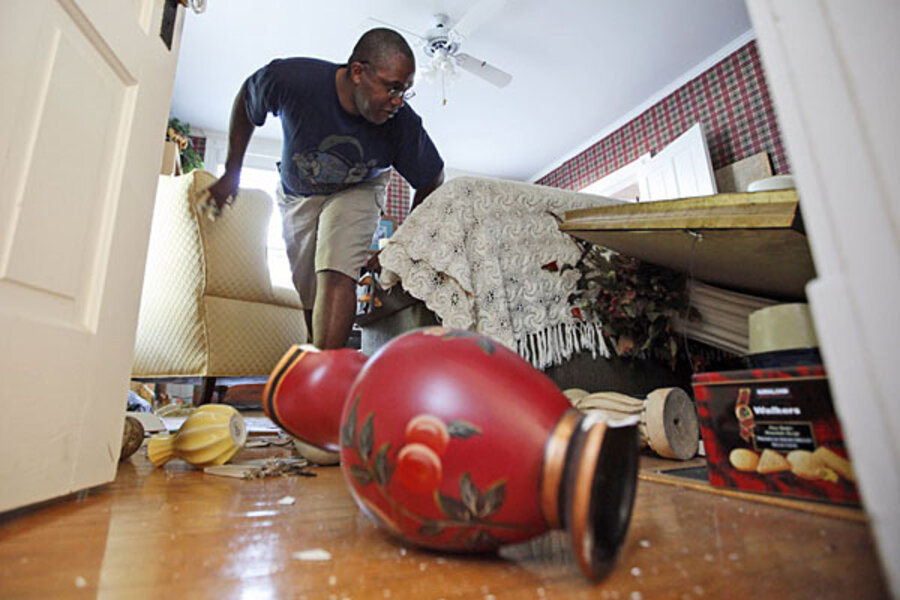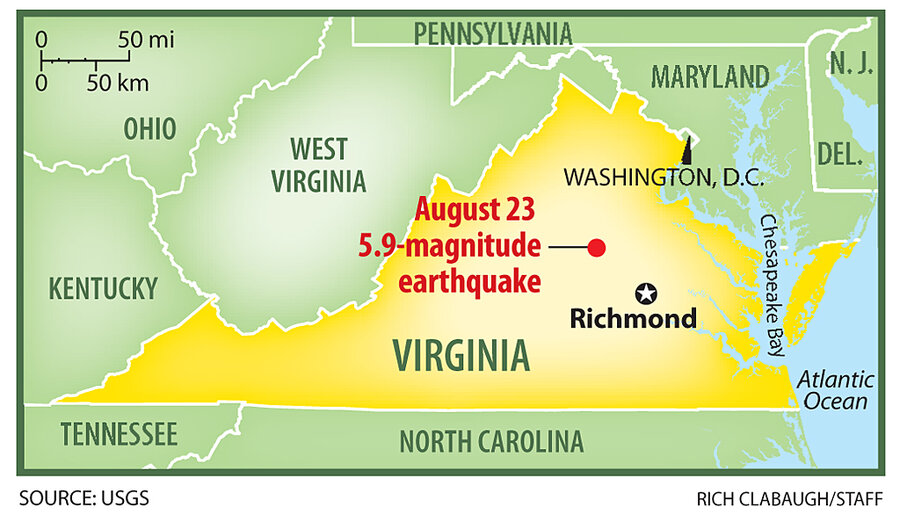Virginia quake: What the numbers say, and what you experience
Loading...
| New York
Immediately after the earthquake in Virginia, Tuesday, the Twittersphere was all abuzz about individuals' experiences.
People felt the 5.9 earthquake from Georgia to Massachusetts, and as far west as Ohio, and everywhere in-between. Many people in this part of the country didn't know what to think of the shaking. It's not often we get an earthquake here, and the last time Virginia had a similar earthquake was in 1897. That particular area of Virginia is only likely to see an earthquake that size once every 1,000 years, say seismologists.
So for those of us who didn't grow up near a fault line, we really don't know what earthquakes feel like. What is the difference between a 4.0 and a 5.0? Or a 5.0 and a 6.0?
First, forget the Richter scale. While still thought by many to be the metric for earthquakes, it was abandoned years ago for all medium and large earthquakes in favor of the "moment magnitude" scale (MMS). In MMS, the difference between two whole numbers, say a 5.0 quake and a 6.0 quake is a 1,000 percent.
Sometimes the numbers assigned to an earthquake these days do not include what metric is being used, but more likely than not, it is now MMS.
Second, these descriptions are for people near the epicenter of the earthquake. Over distances, the earthquake's intensity will be diminished. The President did not experience the same amount of shaking in Martha's Vineyard as these folks did in Tyson's Corner, Virginia. Other factors that can influence the localized intensity include local geology (soil and rock types, soil layers) and the depth of the epicenter of the quake.
According to seismologists, here's what most people will experience with various magnitude quakes:
Below 3.0 - These quakes range from micro earthquakes to quakes that may cause ripples in a pond. They occur approximately 9,000 times per day but you won't feel them - they are too small.
3.0 - You may notice a hanging object swing a little. It's unlikely you will feel anything unless you are sitting still or lying down.
4.0 - Feels like a large truck passing by or even the shaking caused by an explosion nearby.
5.0 - Unmistakable as an earthquake, this can rattle dishes, break windows, and rock cars. Poorly constructed buildings are at high risk of structural damage.
6.0 - You can still stand up, but your books and pictures may fall off the shelves and walls. Your furniture may move and your walls may crack. Outside, the roads may buckle. Buildings' walls may collapse and crack.
7.0 - This would be worse than riding a rough subway train car while standing. You would have difficulty keeping your balance as the earth cracked and buckled. Poorly built buildings are likely to collapse.
Above 8.0 - Incomparable to any amount of shaking you might experience in your life normally. This level of shaking will cause many buildings and some bridges to collapse. Objects will literally fly through the air as the earth jerks violently under them and swallows some things entirely.
Do you live in an earthquake prone zone? How would you describe what they feel like to someone who has never experienced it?






